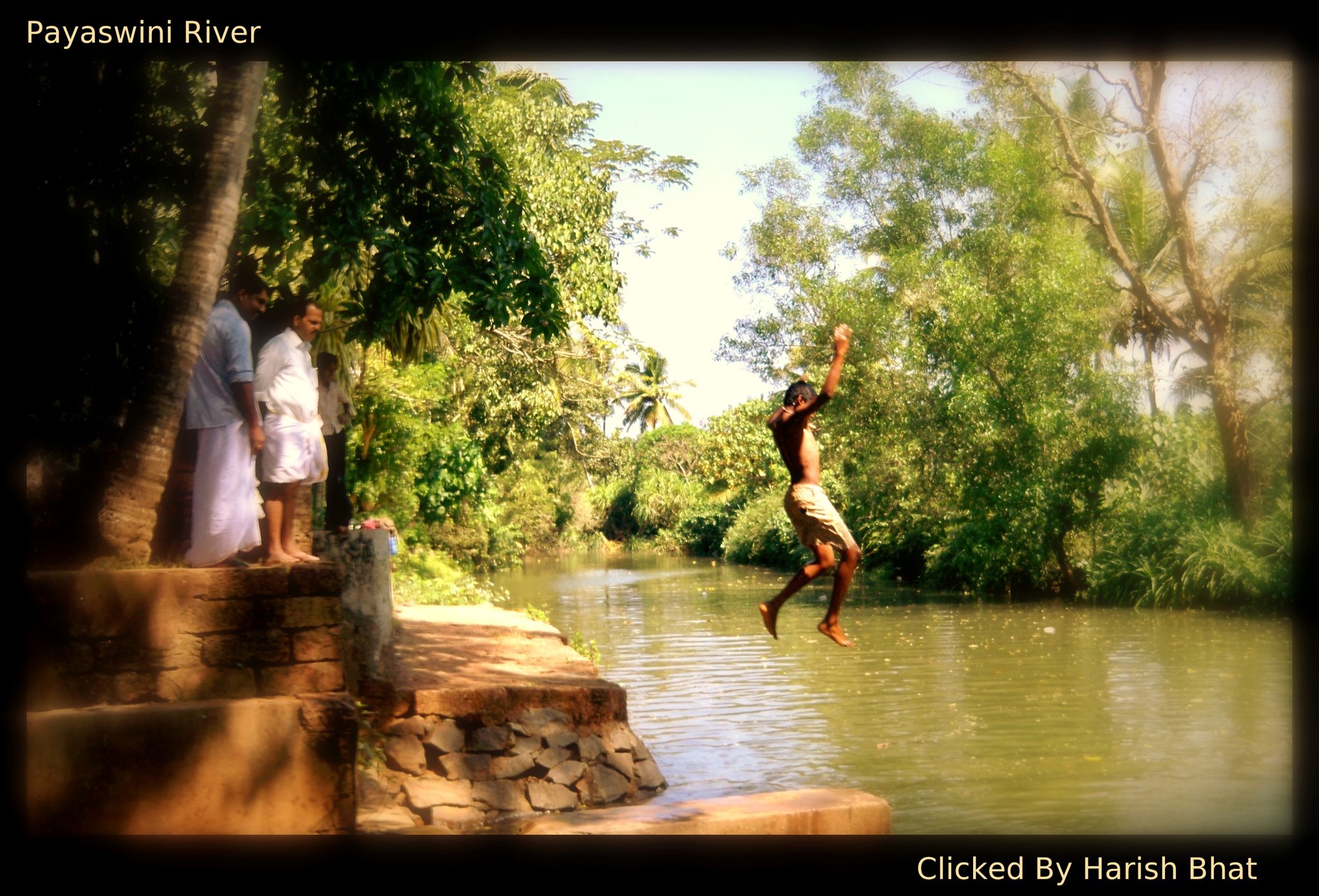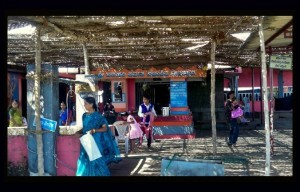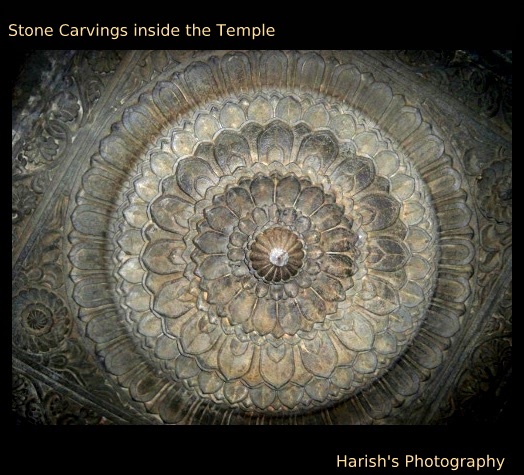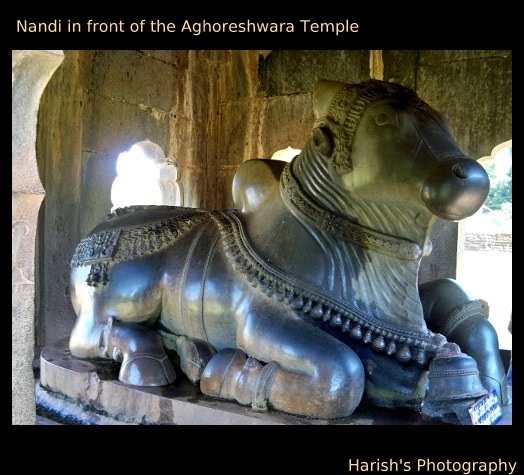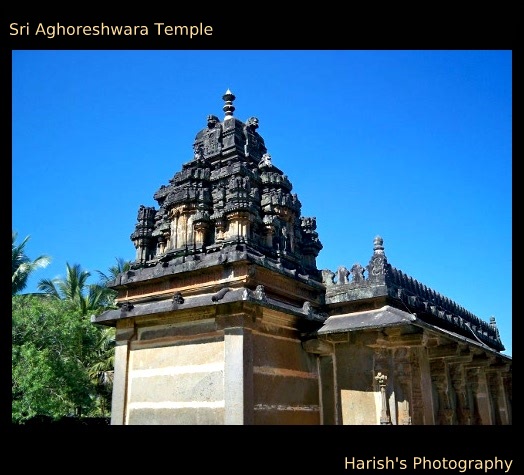
|
The Spring fever at Mugguru forest near Bangalore |
Amazing weekend at St.Mary’s Island
“Ok… we will plan…. which place do you want to visit this weekend?… decide… decide… fast….”. This was the words of Party Admin of our account. After hell lot of conversation / consultation / consideration / deliberation / examination and blah blah… we mutually decided to visit one of the beautiful islands in south India, the St. Mary’s Island. Well..the above was the introduction part about how we finally… decided the place. The partners in the picnic are my colleagues(13 member team). St. Mary’s Islands, are a set of four small islands in the Arabian Sea off the coast of Malpe in Udupi, Karnataka, India. Since the place is not far form Mangalore so we relied on the public transport to visit.
Mangalore to Malpe is one of the most beautiful tourist routes in the South Canara (now its in Udupi 🙁 ) district. The travel route begins in Mangalore and ends up at the city of beautiful beach Malpe. The 66 kilometers long travel route from Mangalore to Malpe is best accessible through road. Your camera stays busy thorough out the journey.

|
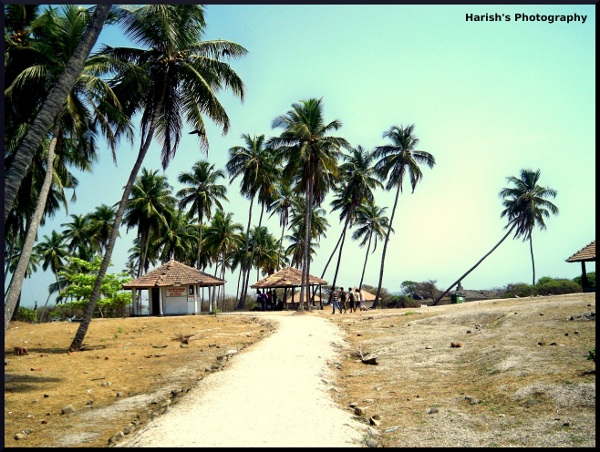
|
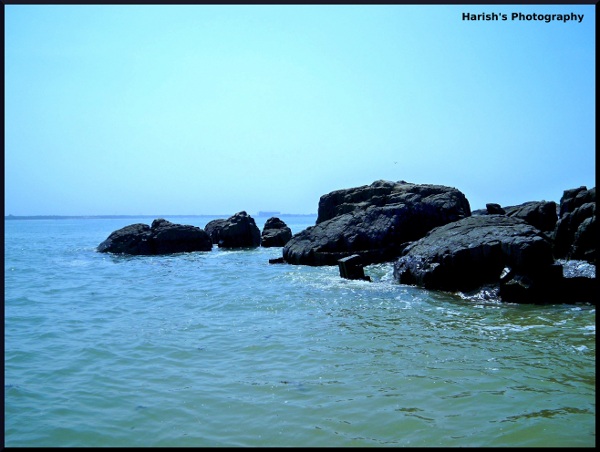
|

|
Little facts about the place
Malpe is one of the natural ports of Karnataka. The city is for about 6 kilometers to the west of Udupi. Malpe is famous for its beaches and group of Island. The mainland of Malpe includes four islands. They are
- Daria-Bahadurgad
- Daria-Gadara-Kalluthe
- Kari-Illada-Kallu
- Thonse Paar (we call it St. Mary’s Islands)
The island is home to basaltic rock formation in a hexagonal form, the only one of its type in India. It covers about an area of 500mX100m. The island is formed during the Deccan Traps, about 60 million years ago. Due to the impressive numbers of coconut trees, the island is also called as “Coconut Island”. Ideally the island has no habitation, but the colonies of Gulls, Sandpipers and a few crows can be sighted on the Islands
How we got in there..
The only way of getting to the islands is by boat. Regular ferry service covers the approx 7 km distance from the Malpe fishing harbor to the islands. However, the frequency of these boats may vary depending on the number of tourists visiting. The cost of the ferry service is Rs.80 per person(includes return journey). They consider minimum of 30 head counts per journey.
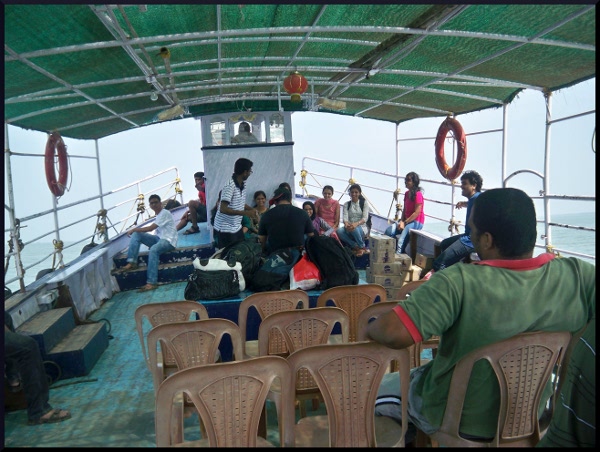
|
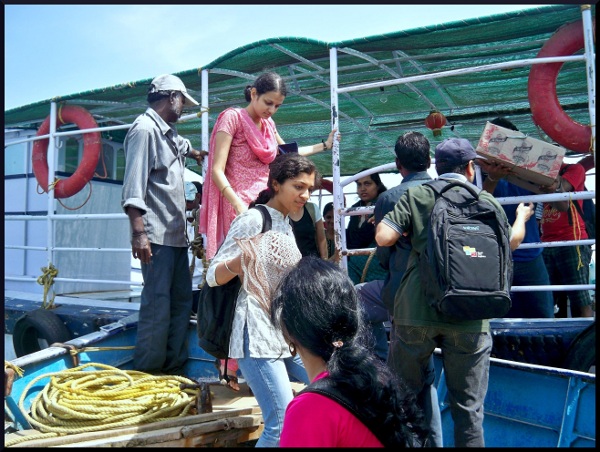
|
The ferry journey was for about half an hour. As soon as we enter the ferry… everybody started to search their favorite spot to sit, so that they can enjoy the ride. We started the journey comfortably. But the comfort started to vanish soon. As we entered the deep sea, it was getting rough. Since the ferry had a flat bottom, it started tilting sideways. Somehow we managed the situation and started to capture the journey through camera.. Everyone was in search their new profile pics for FB.
Since the ferry cannot go near to the island shore (because of rocks) we were shifted to small boat which took us till the shore. The island is dotted with coconut trees, and some huts to picnic under. But make sure you carry your water and food – you will get nothing here.
The Fun…
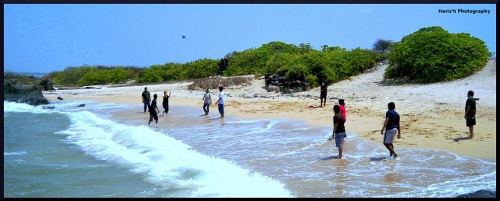
|

|
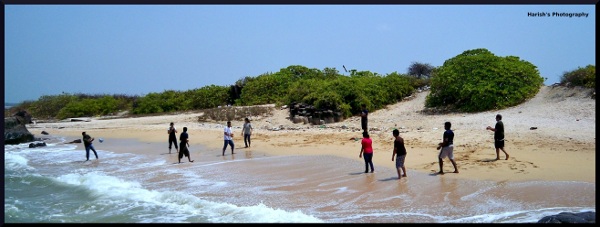
|
Useful Tips
Some of tips for the visitors
- Carry enough water and food along with you
- Cary First Aid box as there is no medical service available
- Carry an umbrella if you are too conscious about sun burns
- Don’t Litter. Take along a trash bag or other receptacle for collecting your trash so that you can deposit it in the proper trash receptacle.
- Last but not the least… Swimming is dangerous. Follow the instruction of the sign boards and ferry owners
Sadashiva Temple -Narahari Parvatha (Hill)
Its been a while, I had never been for trekking… After coming to my Mangalore (from Bangalore), I was little busy to adjust my life to the Mangalorean environment. It took me a year to adjust. Life has become too industrious for me these days. So I took a break from my weekly routine and planned this trip. The Narahari Parvatha (Hill) always fascinated me. The hill is located adjacent to the NH No 48 (now renamed as NH-75). I planned to visit this place in my 2 months old Honda Aviator. As the scooter is new and I never took it for a long drive, I wanted to test the performance during the ride.
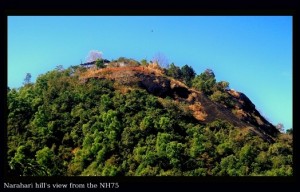
|
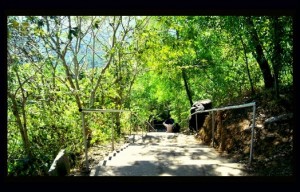
|
Location
Narahari Hill is located on National Highway number 75 that connects Mangalore – Bangalore. The hill is located about 26 km from Manglaore. Once you reach BC Road junction its just 2 km away from there. It is located near the NH 75.
Since my home is 20 kilometers south to Mangalore, I took Mudipu -Melkar road to hit NH 75 at a place called Melkar. This is shortest route from my Home it is just 18 Km from Mangalore University. You can take this route if you are traveling from Thokkotu or Manjeshwara. (You can forget the Mangalore and NH 75 traffic congestions). Take the Mangalore University road from Thokkottu junction. After the Infosys Campus near a place called Kambalapadavu, travel for about 1.5 and then take left turn. (Landmark is near Indian Oil filling station). This road will connects to NH 75 at the place called Meklar. From Melakar junction the Narahari Hill is just a kilometer away. The road is well asphalted and a pleasure to drive. The vehicle cannot go to the top of the hill, you need to park the vehicle at down the hill. There are stairs to reach top of the hill, if you are interested you can take some other(typical trek) route to reach top of the hill.
The Trek
The vehicle cannot go to the peak of the hill. To reach the peak, you need to climb for about 160 steps. But don’t worry you can enjoy the natural breeze and sceneries during the trek. There are trees shades which will protect you from sun throughout the trek. If you have interest in Ornithology(Bird Watching) this is the place for you. I found different bird verities during the trek. Most of the name I don’t know but to name some-Indian Parrots, Woodpeckker, Babblers, Maina, Bulbul. Peacock etc. You can also explore near by forests.

|
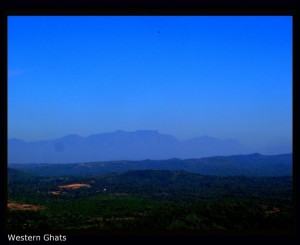
|
Sadashiva Temple and Surroundings
The hill is famous for the Sri Sadashiva Temple. The temple is dedicated to Lord Shiva. This is one of the oldest temple of Karnataka. It is believed that Nara and Hari, incarnations of Lord Vishnu were supposed to have performed the penance at this place. The temple is also known for its ponds. The ponds are in shape of Shanka (Conch), Chakra (Wheel), Gadha (Heavy Weapon) and Padma (Lotus).Nature is at its best at the top of the hill. One can enjoy the panoramic view of the surrounding with the cool breez. Do not forget to take the camera. This place is filled with sceneries. The temple committee has made arrangements for seats to sit and enjoy the nature beauty. To the west side, you can see the Arabian Sea and to the east side you can enjoy the lush green western ghats. We can also spot the Charmadi Ghat from here.
Visiting Season
The best period to visit this place is during the monsoons. July to December would be the ideal time. If you visit during monsoon season, entire area around the mountain will be lush green and you may even be lucky enough to see low level clouds around the peak. Morning between 7 to 10 is the best time to visit the place.
Precautions
Carrying food and water would be good. Once you cross Melkar you wont get any shops and restaurants near by. There is small shop near at the hills, but you cannot relay on them. Do not dare to forget the umbrella during the rainy season.
16 September- World Ozone Day
16th September each year, we celebrate as International Day for the Preservation of the Ozone Layer. On this day in 1987 the Montreal Protocol on Substances that Deplete the Ozone Layer was signed. This offers an opportunity around the world to focus attention and action at the global, regional and national levels on the protection of the ozone layer.
The Ozone Layer serves the protective layer of naturally occurring gas, comprised of three atoms of oxygen found about 10 – 50 km above the earth’s surface that protects us from the harmful ultraviolet radiation or UV-B rays of sun. Scientist found that the layer was thinning as a result of the excessive use of CFC’s. In 1985, nations around the world convened at Vienna in an attempt to develop a framework for co-operative activities to protect the Ozone layer. This signed agreement became known as the Vienna Convention for the Protection of the Ozone Layer.
Today morning I saw a interesting short film on Ozone Protection. It is beautifully animated movie which will tell you more about importance of ozone gas. Please watch Ozzy Ozone on YouTube
Ozone is poisonous by nature, we cannot produce ozone gas and release it to the earth surface. The Mother nature decided its right place high above the earth. The only option left is to protect the layer of ozone by reducing the emission of CFS’ and other ozone killer gases into the atmosphere.
Over the years, the ozone layer has been depleting, and our scientists are working hard to overcome this ozone depletion problem. But, even we should act responsibly to help curb this global menace. Let us spread the awareness and take the opportunity of September 16, Ozone Day, to help educate others about ozone depletion and do our bit to protect life on earth.
The image used in this post is the cover page of the “Ozone newsletter special Issue” published by UNEP
Happy Ozone Day to all.
ಬೆಟ್ಟದ ಜೀವ (Man of the Hills) – A must watch movie
It was during my graduation when I read the book ಬೆಟ್ಟದ ಜೀವ (Bettada Jeeva) for the first time. The book is written by the eminent writer, thinker Dr K Shivaram Karanth.. This wonderful novel depicts the life of people living in the Western Ghats. Recently, P.Sheshadri renowned filmmaker and director, made a the movie based on this novel. Today I had a chance to see this film. The director did a justice to each every character in this movie.
The promo of the movie “Bettada Jeeva” -Courtesy Youtube
The movie takes you to the pre-independence time. An aged couple Gopalaiah (Dattanna) and Shankari (Rameshwari Verma) in a village near Western Ghats. They own a agriculture land and that is the only basis of their livelihood. They have a son who has been missing for a long time.Despite of all these problems, the couple were living in great valour. One day a young freedom fighter Shivaramayya (Suchendra Prasad) visits to take refuge in their house. Though his intension is take a day refuge, he likes the way couple treats him. Gopalaiah narrates how he has converted the thick forest into an agricultural land without disturbing the surrounding environment. It is inspiring to know that the couple despite being worried about their lost son and being lonely in the forest, have never lost interest in life.
No wonder the movie earned National Award for the Best Environmental Film this year. Every characters is perfectly fits in the movie. Daththathreya and Rameshwari Varma have done their best. The background scores and music is given by V Manohar and matches with all sequence of the movie. Gopalakrishna Pai’s dialogues adds life to the characters, The local language(Tulu) can be heard in between. The locale of filming is Kujugodu village near Kukke Subrahamanya. Falling in the edge of Western Ghats, it served as perfect location for this movie.
If you are environmentally conscious person, you definitely like the movie. The movies serves as inspiration to people who make conscious effort to save our ecological assets. It also teaches how we can lead our life without disturbing the ecological balance
Temples of Keladi and Ikkeri
This is second part of the Shimoga Trip. In this part I am writing about the fine temples of Keladi and Ikkeri. Keladi and Ikkeri were under the regime of Nayaka Dynasty. Nayakas of Keladi were an important ruling dynasty of post-medieval Karnataka, India. They initially started to rule as a feudatory of the Vijayanagar Empire. After the fall of the empire in 1565, they gained independence and ruled significant parts of Karnataka including Shimoga.
Art and Architecture
The temples were built in Dravida style of Architecture (a perfect blend of Kadamba, Hoysala and Vijayanagara). They used granite for the constructions. The Aghoreshwara temple at Ikkeri and the Rameshwara temple at Keladi are the best examples of the Nayakas’ art.
This magnificent temple is in Ikkeri, capital of the Keladi Nayakas situated 3 Kms from Sagara, Shimoga district. Ikkeri in Kannada means two streets. The temple is dedicated to Lord Shiva. Aghoreswara means ”the lord of 14th night of the darker half of Hindu month of Bhadrapada” . This unique temple is built in using laterite material, which is abundantly found in this part of the world. The architecture of the temple is in blend of Hoysala and Vijayanagara style.
The statue of Nandi which is located in front of the temple is an example excellent work of sculpture. The Nandi resides in the Mantap which is decorated with artistic stone engravings. The temple is a huge structure with the three gates, one is the main gate at front, and other two are in the left and right side of the temple. The original deity of the temple which had 32 hands is revered as an innovative creation. The idol was destroyed during the attack of Sultans of Bijapur. Lamps and other damaged structures indicate that the idol was over 10 feet in height.Only the ornate pedestal on which the deity was placed remains now and a Shiva lingam has been erected on it. On the either side of the shrine, there are broken idols of various gods and goddesses. Beside the main temple, there is a shrine dedicated to Goddess Akilandeshwari. Both temple’s ceilings are adorned with intricate carvings.
Rameshwara Temple
The temple is popularly known as Keladi Rameshwara Temple. The shrine has three deities, Devi Parvathi, Lord Rameshwara and Lord Veerabhadra. The temple was built by Chowdappa Nayaka. The temple is in dravidian style of architecture influenced by Kadamba and Hoysala style. The roofs and pillars of the temple is made out of carved wood.
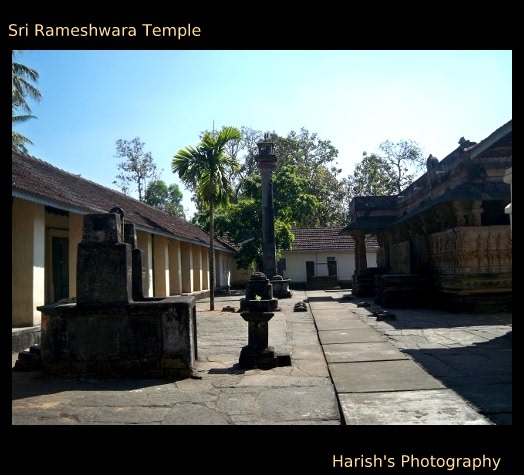
The stone sculpture of Ganda Berunda on the ceiling of the Veerabhadra temple is exquisite.(It is used as logo for Karnataka Road Transport Corp. KSRTC) It is a depiction of a two-headed garuda (a mythical bird) holding lions with its beak and elephants with its claws. This dwajasthambam is said to be erected during the regime of Keladi Chennamma. Temple has a museum in which many ancient artefacts are carefully preserved. It has the collection of rare artifacts like swords, combs, manuscripts, coins and brass idols.
I also visited small village called Varadahalli. Its where Shree Shridar Swamiji attained the Moksha or Nirvana (Divine bliss). The place is 6 km from Sagar. Its been said that this divine place in Western ghats was the chosen place of Maharshi Agastya and Veda Vyas to do Sadhana thousands of years ago.
.
The journey was incomplete as there was time constraint. I had only two days of time to visit Shimoga. Anyways there is always ‘next time’ to explore more places.
Sigandooru… In the backwaters of Sharavati
Whenever we hear about the word ‘backwaters’… the only state of India which come into the mind is Kerala…. undoubtedly Kerala is home to the most beautiful backwaters on the planet. Last month (Dec2010) I visited the place called Signadooru… a small village in the backwaters of the river Sharavati (Linganamakki reservoir).
The trip was an unplanned. My relatives went to attend a marriage function at Sagar, a beautiful place in the Shimog district. Since the next two days are weekend they planned to explore near by places. So I got the invitation to join the group. I managed to get a bus from Mangalore to Shimog on Firday night.
The Bus Service to Sagar
Only two buses are there from Mangalor. A private company Gajanana Transport will run daily two buses to Sagar. The bus timings are as follows
| Bus Name | Timings |
| Durgamba Travels | 21:30 hrs |
| Gajanana Travells | 22:30 hrs |
Buses will reach Sagar at around 3:30 hrs and 4:30hrs respectively. The capital city Bangalore is well connected with Sagar many Government (KSRTC) and Private buses have their daily trips. From Bangalore the Sagar is approximately 350 kms
The journey…
We started from Sagar at around 07:00 hrs. As we had our private vehicle, we choose the Avinahalli and Ambaragodlu route to reach Holebagilu. The are belongs to Sharavati Reserve Forest. Although it is a reserved forest one can see human inhabitation on the way to Holebagilu. 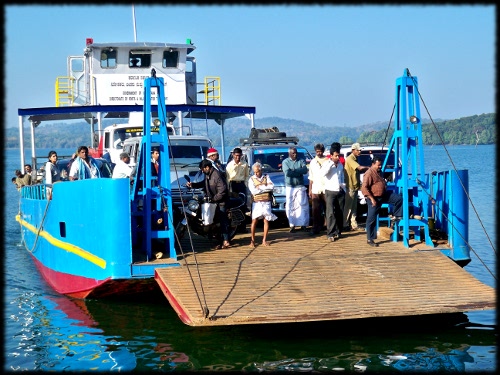 This is the place where the backwater starts. The is called as backwater because of a huge dam constructed across the river Sharavati at Linganamakki. Karnataka’s half of the electricity demand is satisfied by this dam. The stored water of the dam penetrates into the wast areas of land. According to a local people more than 100 big villages, submerged during the construction of this reservoir.
This is the place where the backwater starts. The is called as backwater because of a huge dam constructed across the river Sharavati at Linganamakki. Karnataka’s half of the electricity demand is satisfied by this dam. The stored water of the dam penetrates into the wast areas of land. According to a local people more than 100 big villages, submerged during the construction of this reservoir.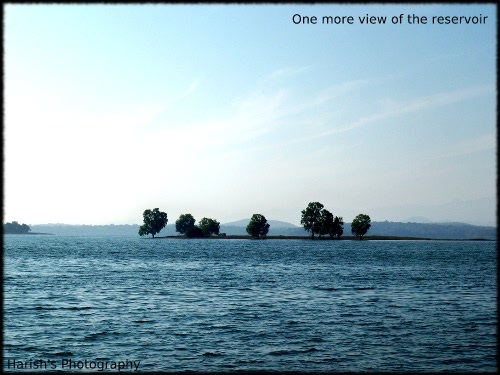 I have read and heard the pain that were undergone by the people in this part of the world during the construction of this dam. Before the reservoir this was the route which connects Sagar and Nittur (NINASAM, a cultural organization dedicated to the growth of drama, films and publishing). The best part was the journey in the Barge. Only during the barge journey one can feel the vastness of the reservoir.
I have read and heard the pain that were undergone by the people in this part of the world during the construction of this dam. Before the reservoir this was the route which connects Sagar and Nittur (NINASAM, a cultural organization dedicated to the growth of drama, films and publishing). The best part was the journey in the Barge. Only during the barge journey one can feel the vastness of the reservoir.
Devi Chaudamma Temple at Sigandur
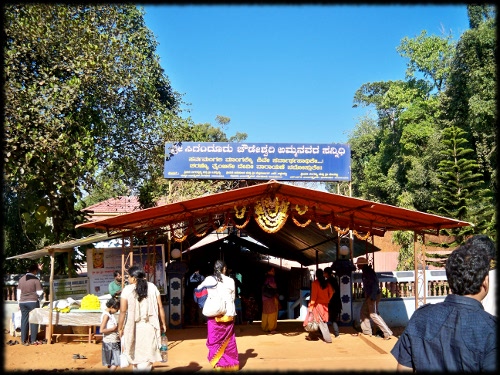
Singandur, the place is located in the other side of the reservoir. Devi Chudeshwari Temple is located in this place. The temple is dedicated to Devi Chaudamma. Its been believed that on wearing of the brass tag which is available in this temple will protect house and the belongings from the thief. During Sankrathi (January) Jatra (festival) is celebrated in this temple.
